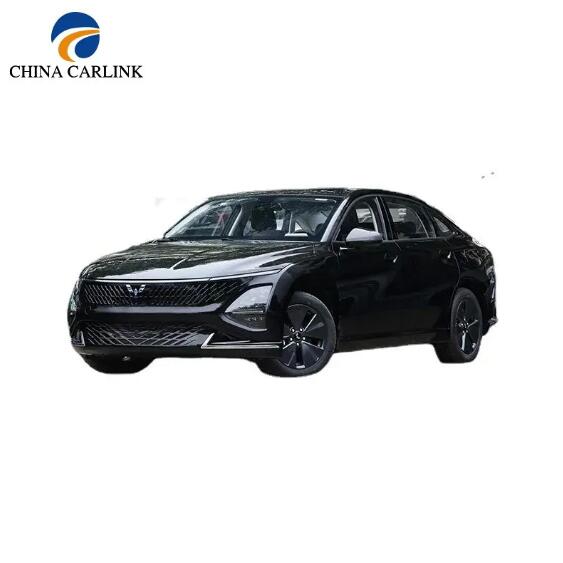Key Differences Between Passenger and Commercial Vehicles: A Comprehensive Guide
2024-11-06
When it comes to vehicles, understanding the differences between passenger vehicles and commercial vehicles is essential, especially for business owners, fleet managers, or anyone considering a vehicle purchase for specific needs. While both types of vehicles share the common goal of transportation, they are built with different requirements in mind. In this blog, we’ll provide a detailed comparison of passenger and commercial vehicles, touching on everything from design to operational costs and usage.
1. Design and Purpose
- Passenger Vehicles: As the name suggests, passenger vehicles are primarily designed for personal transport. These include vehicles like cars, SUVs, and minivans. Their primary purpose is to carry a small number of passengers (usually up to seven) and their belongings in comfort and safety. These vehicles are intended for everyday use, whether it’s commuting, long-distance travel, or casual driving.
- Commercial Vehicles: Commercial vehicles, by contrast, are designed to serve a business purpose. These vehicles include trucks, vans, buses, delivery vehicles, and specialized vehicles like ambulances or construction trucks. Their main objective is to transport goods, large amounts of cargo, or multiple passengers for business or industrial purposes. Commercial vehicles are built for heavy-duty use and are often adapted for specific industries, like food delivery, moving, or construction.
2. Vehicle Size and Capacity
- Passenger Vehicles: Passenger vehicles are typically compact, mid-size, or full-size, and are designed to transport a small group of people. The interior is often designed with luxury and comfort in mind, featuring plush seating, advanced climate controls, and entertainment systems. Additionally, they offer adequate cargo space for personal items such as luggage, groceries, or sports equipment.
- Commercial Vehicles: Commercial vehicles are significantly larger in size to accommodate the transportation of bulk goods, large equipment, or numerous passengers. For instance, cargo vans or trucks have expansive cargo areas, while buses and coaches can hold dozens of passengers. Commercial vehicles often prioritize functionality and utility over aesthetics, focusing on maximizing space and load capacity.
3. Performance and Power
- Passenger Vehicles: Passenger vehicles are typically equipped with smaller engines designed to provide a balance of fuel efficiency and performance. They focus on smooth driving experiences with optimized features for comfort, such as reduced noise levels, responsive handling, and sufficient acceleration for city and highway driving.
- Commercial Vehicles: Commercial vehicles require much more powerful engines to handle the demands of heavy loads, long-distance travel, and constant use. These vehicles often have larger engines with more torque and horsepower, designed to support the weight of cargo or multiple passengers. As a result, commercial vehicles are less fuel-efficient but are built for strength, durability, and longevity.
4. Cost and Maintenance
- Passenger Vehicles: The cost of passenger vehicles can vary widely based on the make, model, and features, but in general, they are more affordable than commercial vehicles. Maintenance costs are also lower since passenger vehicles are generally less complex and require less intensive repairs. Insurance premiums for passenger vehicles are also more affordable, as they are seen as lower risk compared to commercial vehicles.
- Commercial Vehicles: Commercial vehicles come with a higher initial cost, due to their size, power, and specialized functions. They also incur higher maintenance and repair costs, as they are subject to more wear and tear from continuous use. Furthermore, commercial vehicles often require specialized servicing depending on the type of vehicle (e.g., refrigeration units, hydraulics). Insurance for commercial vehicles is typically higher, as it covers potential liabilities, cargo damage, and more.
5. Regulations and Licensing
- Passenger Vehicles: Driving a passenger vehicle requires a regular driver’s
license, which includes basic knowledge of traffic laws and road safety. Passenger vehicles are regulated for safety standards like airbags, seat belts, and crash tests, but they are generally less restricted in terms of weight limits and inspections compared to commercial vehicles.
- Commercial Vehicles: Commercial vehicles are subject to more strict regulations due to the nature of their use. Drivers of commercial vehicles often need specialized licenses, such as a Commercial Driver’s License (CDL), which requires additional training and knowledge of road safety, vehicle handling, and the specific laws regarding the operation of large vehicles. Commercial vehicles are also subject to weight restrictions, frequent inspections, and other safety standards that ensure their roadworthiness.
The distinction between passenger vehicles and commercial vehicles lies in their design, functionality, and purpose. While passenger vehicles prioritize comfort and efficiency for everyday personal use, commercial vehicles are built for business purposes, with durability, load capacity, and performance taking precedence. Whether you're purchasing a vehicle for personal use or for commercial operations, understanding these differences will help ensure that you choose the right vehicle for your needs.



